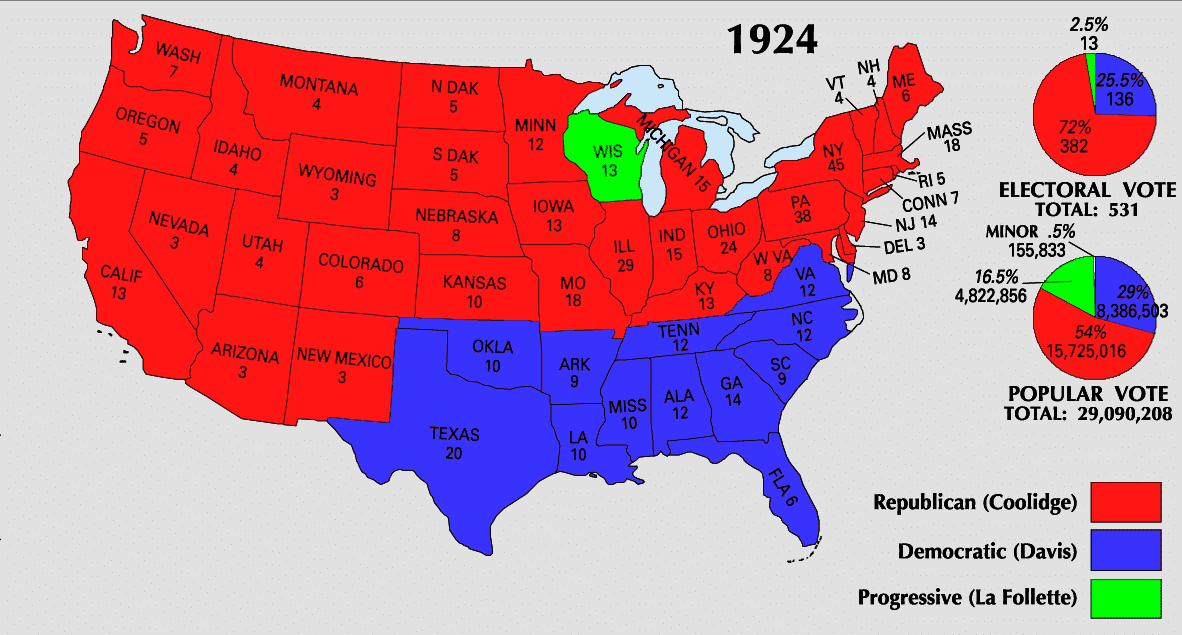The Presidential Election of 1924 came at a time of economic boom as the Roaring '20s were in full tilt.

It was an interesting time to be alive as such greats as Babe Ruth, Lou Gehrig, Jack Johnson, and more were becoming popular American sports icons.
Prohibition had also been passed with the Volstead's Act in 1919, and by 1924, the age of rum runners and bootleggers was in its prime.
This would also be the first election in which Native Americans were recognized as American Citizens and given the right to vote.
The Socialist Party started to see some gains in this election. Its gains would peel many votes off of the Democratic party, which would hurt them in many states.
Both major candidates campaigned for limited government, reduced taxes, and less regulation. There was not much distinction between the two.
The Candidates were as follows:
- Republicans: Calvin Coolidge and Vice President Charles G. Dawes
- Democrats: John W. Davis and Charles W. Bryan
- Socialists: Robert M. La Follette and Vice President Burton K. Wheeler
Platforms
Republicans: The Teapot Dome Scandal was a significant blow to Harding's administration, but the economy was booming, and everyone seemed to want more of the same. Coolidge promised limited government and less government intrusion, although he supported Prohibition. He quickly became popular for his quiet demeanor.
Democrats: The Democrats saw significant gains during the 1922 Congressional Elections and believed that they could win the 1924 election with a populist candidate. However, the party split, and the more conservative candidate, John W. Davis, won the nomination. This meant that he believed in many of the same ideas that Coolidge believed in.
Socialists: The Progressive candidate also called for government ownership of water power and gradual nationalization of the railroads. He also supported the nationalization of cigarette factories and other large industries, strongly supported increased taxation on the wealthy, and supported the right of collective bargaining for factory workers.
Outcome
Calvin Coolidge won the election in a landslide. He had overcome the Teapot Dome Scandal of Harding and had been given much of the credit for the booming economy.
The Socialist Party Platform resonated with many Democrats and even took the state of Wisconsin. Their early ideas seemed to resonate with American workers who had been mistreated by big businesses.
The Democratic Party had already been divided during their convention, and with the Socialist ideas making headway into their party, it further hurt their chances to win the election.
Despite a lower voting turnout from the Republicans, Calvin Coolidge still took 382 electoral votes despite losing Tennessee and Wisconsin.
The Socialist Party certainly gained influence, and when the Great Depression hit, it would become part of Franklin D. Roosevelt's policies.
